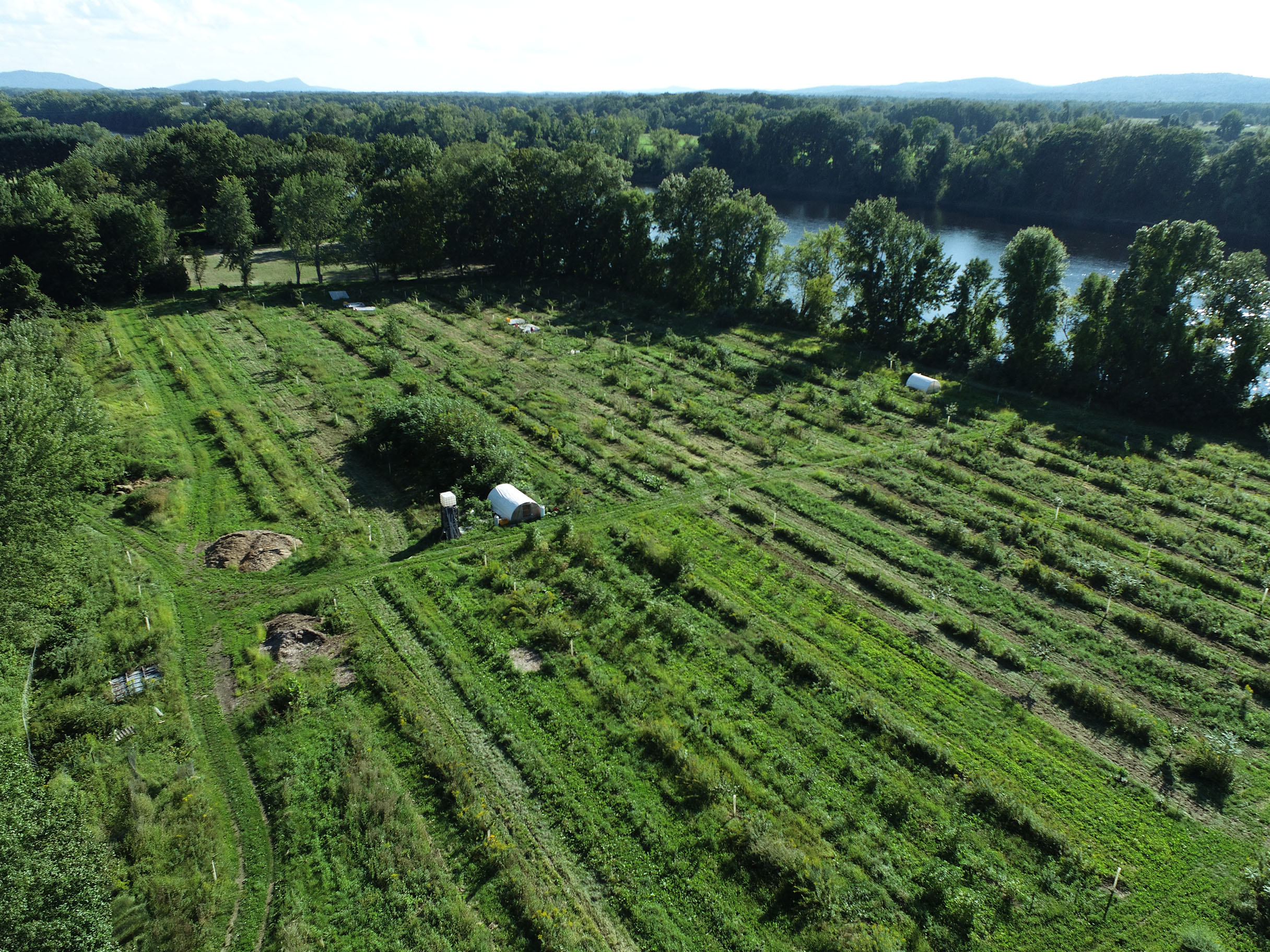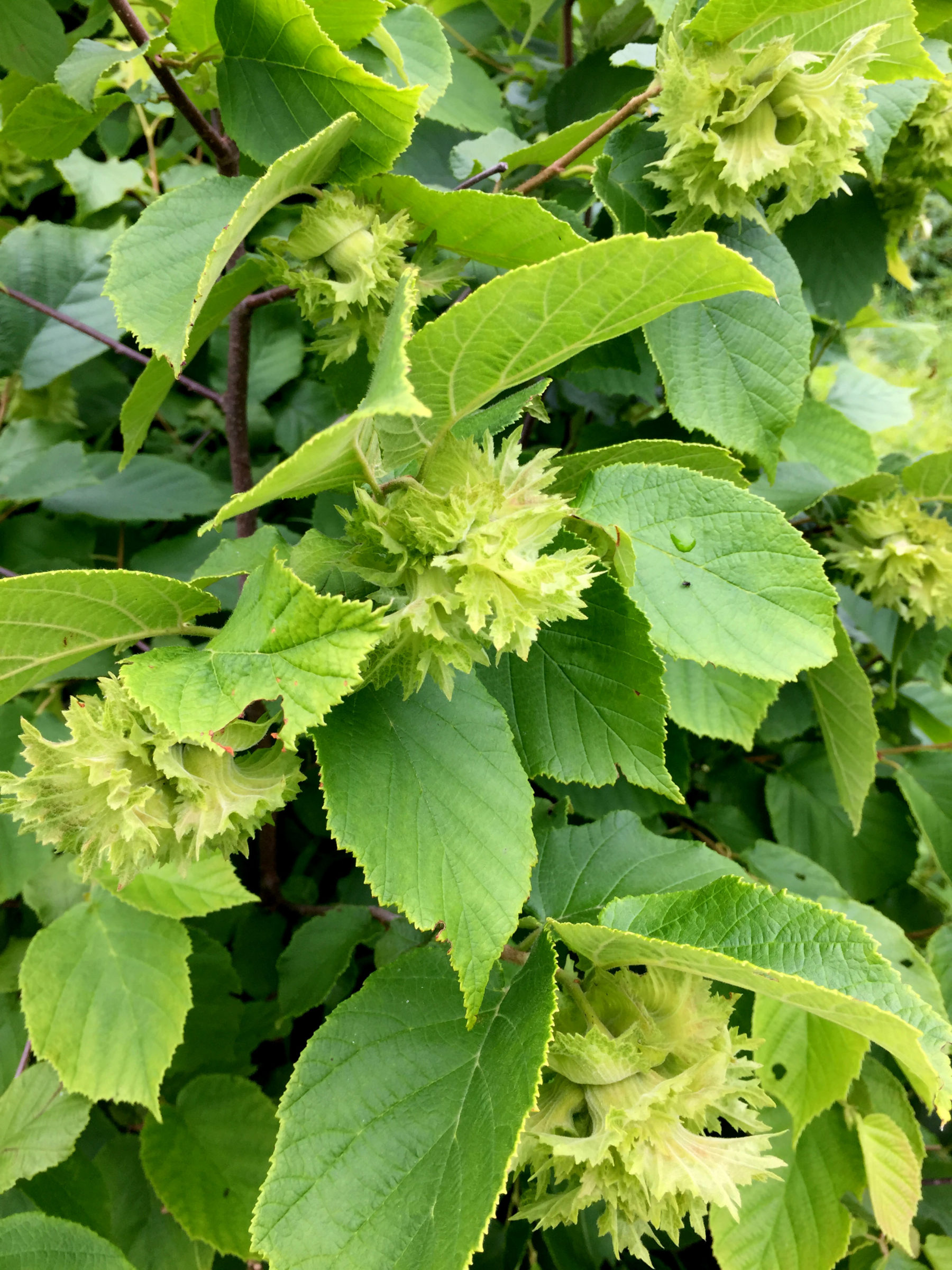
Expanding Agroforestry and Nut Crops in Massachusetts
RDG is collaborating with NOFA/Mass on a three-year project to increase agroforestry and nut crop production in Massachusetts through targeted outreach to both farmers and consumers. The project will bring together a cohort of farmers who are at various stages of implementing agroforestry systems on their land to provide technical assistance and peer learning support.
Join us for bi-monthly “Go Nuts” Agroforestry Calls! Ask your questions and gather key resources and information about sourcing, planting, maintenance, harvesting, processing, marketing, and more.
Upcoming Dates + Topics
- Tuesday, May 2nd, 2023: Potential crops, tree crops species selection, genetics & suitability
- Tuesday, July 11th, 2023: Planting and tree establishment/care in pre-production years
- Thursday, September 7th, 2023: Marketing and consumer outreach for tree crops (buying, eating, etc.)
- Thursday, November 2th, 2023: Current grant and funding opportunities for agroforestry
More info at the NOFA/Mass Go Nuts page!
What is agroforestry?
Agroforestry is a diverse set of practices that intentionally incorporate trees and shrubs into annual crop and animal farming systems. The trees and shrubs can produce food or provide other benefits to grazing animals, wildlife, or soil microbiology. Practiced for centuries by indigenous nations around the world, agroforestry plays a key role in adapting our modern food system to a changing climate and even reversing the degradation and high carbon emissions of current monocrop and tillage-based annual agriculture.

Agroforestry systems mimic the structure of forest ecosystems and can sequester and store significant amounts of atmospheric carbon in woody biomass and soil. They are well-suited to steep slopes and degraded croplands and can help prevent erosion, recharge groundwater, restore soil biodiversity, and repair fragmented ecosystems. In the Northeast, agroforestry systems are being developed to produce perennial crops like nuts, berries and fruit; produce timber, mushrooms, syrups, and other forest products; provide fodder and shade for livestock; and protect fragile riparian areas and other environmentally-sensitive lands.
Barriers to adoption
Although it can take several years to develop a new agroforestry system, once established, it can typically be maintained with minimal inputs for hundreds of years. During the transition, farmers can gain additional income and resilience by growing multiple crops on unique timelines, such as annual cash crops or pasture-raised poultry in between rows of chestnuts. However, there are many barriers to adoption in Massachusetts, including general unfamiliarity with agroforestry, cost of implementation, secure access to land for perennial crops, lack of technical support, and an underdeveloped market and value chain.
With the support of NOFA/Mass, four farms will receive agroforestry planning and design services from RDG to determine how best to incorporate and implement agroforestry on their farm. Through the design process, RDG will determine the layout of tree species, crops, and/or livestock that will uniquely fit the economic, social, and/or environmental goals of each working operation. This process will also result in the creation of publicly available agroforestry design templates that will assist other growers in Massachusetts to get started in implementing their own agroforestry projects.

Expanding agroforestry in Massachusetts will require a multifaceted approach to increase consumer awareness, advocate for policy changes and incentives, and support farms with technical assistance, funding, and new market opportunities. This project is part of a much larger overall effort across the United States to improve the resiliency of our food system in response to a changing climate, utilizing more traditional, innovative and ecologically-integrated techniques. If successful, these efforts will shift how humans relate to the environment through food, creating healthier, living landscapes for people, animals, and ecosystems.



Comments (0)